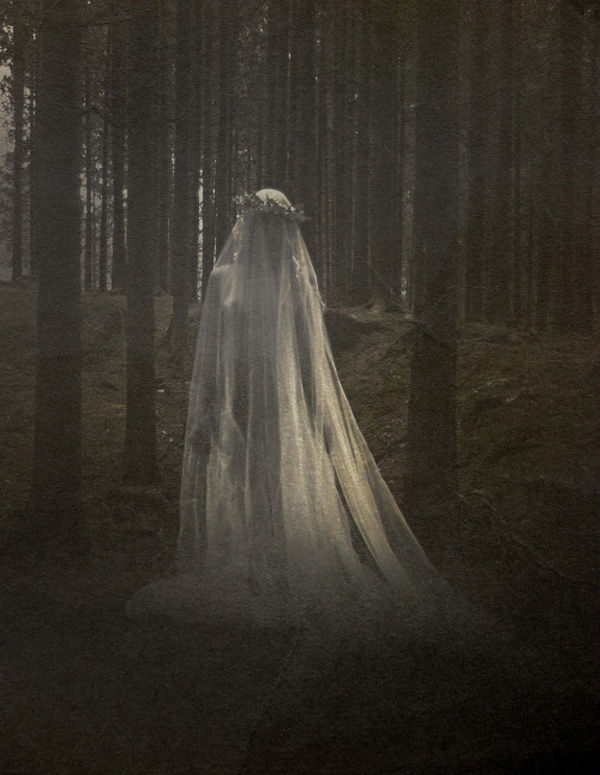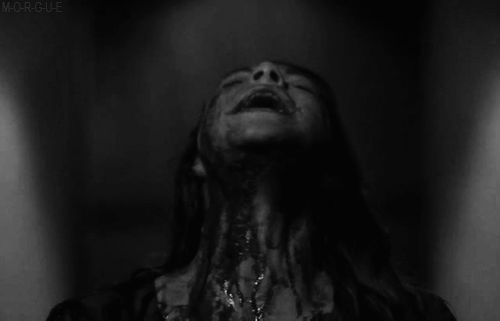
Crimson
A World of Darkness
Vampire Chronicle

Vampire Creation
Making a character can be a difficult process for a lot of people. But this walkthrough is here to help you through. We will walk you through an appropriate creation process in order to have a complete and correct sheet first time. Please follow the instructions below. If you do nee further assistance, please contact our Storytellers via email:
Loralai - thefightforloralai@gmail.com
Charlotte - charlotteofthehounds@gmail.com
Jack - jack.switzer@gmail.com
Or you may enter our OOC chat room on the Darkmyst IRC game server and speak to either of them directly. All of them will be able to guide you through the creation process and submittal.
Firstly do you have an account on www.puppetprince.com ?
If you do please log in and skip the instructions on how to create one.
If you do not then please click on the link above. You will need an accessible email address, no credit card information will be asked for this free service. Crimson is a Free-To-Play system.
Register for PuppetPrince and create a username on your account. The step by step on the website will aid you in doing so. But please remember the email you have used as you will need this to access your account in the future.
Once you have made your account then please click on the 'Characters' tab at the top of the page. Once you arrive at this page you will see a yellow button on the right side of the page named 'Create a Character'
Click this button and you will be taken to a menu. WhiteWolf and Vampire The Masquerade should both be selected before you type in a name in the box with the text 'Unnamed' Once you have done this however you may click the 'Create' button at the bottom of the White Wolf box and your new sheet will be displayed for you.
It is advisable at this point to speak with a Storyteller who will be able to send an invitation to the Crimson Chronicle. This will appear in your used email address. You need to click accept on this email to join the chronicle.
If you are a new player then please submit the sheet at this point. It means that the Storytellers will be able to see your sheet as you save your changes and progress in the creation process. You can do this by looking to the right hand side of the chronicle main page and under the Venue Setting Box, there should be a red title 'Submit a Character'
Click here and select your new sheet from the drop down menu before hitting 'Submit'
Now you have joined our chronicle we can finally begin your creation process.
Summary: (For Experienced Players)
-
Step One: Inspiration — Who are you?
— Choose a concept
— Choose a clan
— Choose a Nature and a Demeanor
• Step Two: Attributes — What are your basic capabilities?
— Prioritize Attributes (seven primary, five secondary and three tertiary)
— Choose Traits
• Step Three: Advantages — What do you know?
— Choose five Abilities
— Choose three Basic Disciplines
— Choose five Backgrounds
• Step Four: Last Touches — Fill in the details.
— Assign Blood Traits
— Assign Willpower Traits
— Assign Virtue Traits
— Choose Negative Traits and Flaws (if any)
— Choose a Derangement (if desired)
— Spend five (or more) Free Traits and choose Merits (if any)
• Step Five: Spark of Life — Narrative descriptions
-
The three-game rule: You can adjust your sheet between games for your first three games of play (and prior to the fourth).
Walkthrough:
Step One: Inspiration
Arguably the most important step in character creation is the formation of the basic concept. Every character was once a normal human, after all, with hopes, fears, dreams and ambitions. Once entered into the realm of the Supernatural, the character brings her particular views to his/her new life. These strengths and weaknesses shape the character’s Traits, capabilities and limitations. The first step in creating a character is to come up with a basic idea of the person. This initial concept can usually be summed up in a single word - scholar, drifter, dilettante, laborer, whatever. Don’t worry about details now; think more in terms of broad brush strokes. Create the person, before you create the character.
By far, one of the most important steps in this process is the choice of your character’s creature species/type. It will help determine how the character comes to life down the road.
The choice of creature type is a permanent decision in a character’s life. All sorts of goals and accomplishments in the supernatural society, expectations and stereotypes of her fellow supernaturals, and - to some, most importantly - the scope of powers available to the character should be taken into account when the choice of creature type is made.
If no vampire types strike your fancy, a character can always be a normal human being - bereft of any known advantages.
Step Two: Clan
With a base concept in mind, determine your character’s clan. An artistically inclined mortal, for instance, is likely to be Embraced as a Toreador; a businessman from European stock could be a Ventrue. It’s fine to break stereotypes, of course, but the initial concept, even if it does not determine clan, will shape a character’s outlook to her own clan (and others). The choice of clan influences a character’s development heavily. The clan determines the sorts of goals and accomplishments for which the character will be lauded in Cainite society, and the expectations to which she will be held. The clan also determines the sorts of Disciplines, strengths and weaknesses innate to the character. Note that some clans or bloodlines are more rare than others, and the Storyteller may very well restrict access to some — not every city will have a population of Lasombra antitribu or Daughters of Cacophony, after all. If no clan strikes a particular chord, a character can always be Caitiff — bereft of any known clan and possessed of an eclectic assortment of Disciplines — but these vampires are almost uniformly weak of blood, higher in generation and limited in Cainite standing. Use the link below for information on Clans.
Step Three: Nature and Demeanor
To define a character’s personality, choose a particular Archetype. Each Archetype lists an underlying motivation, a reason for a character to behave in specific ways. The Archetypes described here are, by no means, the final list of personalities; Storytellers can suggest and approve any further numbers of Archetypes. A character’s Nature is her inner-most persona, the true basis of her motives. Though many people bury their desires behind facades, the drives of the Nature often shine through. Since the character’s Nature is a result of her upbringing and life experiences, Nature changes rarely. It takes extraordinary events to cause
someone to change Natures.
By contrast, the Demeanor is the public face, the one a character shows to everyone else. Even if radically at odds with the character’s Nature, the Demeanor provides a convenient mask against intrusion. Demeanors are subject to change at whim; some
characters may change Demeanors like some people change socks, while others may choose a single face to present to the world. On occasion, Nature and Demeanor may be the same, but few individuals are so open, especially in Kindred society.
Step Four: Attributes
Natural capabilities use Attributes for descriptions. Every character has certain innate qualities. Attributes describe these qualities, marking a character’s particular areas of intrinsic talent.
- Choosing Attributes
Each character has areas of modest skill and other areas of excellence. You determine your character’s natural talents, selecting whether your character is to be physically adroit, mentally agile or socially adept. The character’s concept should guide these choices, so a mountaineer is likely to be physically exceptional while a bookish historian probably has more mental development than social.
• Physical Attributes measure your character’s general health, stamina, agility and power. A character with modest Physical Attributes is probably not very athletic, while a character with high Physical Attributes is exceptionally strong, dexterous or tough.
• Social Attributes determine the force of a character’s personality and ability to interact well with others. If your character has few Social Traits, she may be awkward, shy or just plain-looking. A socially potent character is attractive, compelling or smooth.
• Mental Attributes help in problem-solving, learning, deduction and general alertness. With limited Mental attributes, a character is not particularly well-educated, quick-thinking or perceptive. A strongly Mental character is conversely attentive, logical or intuitive.
Choose the priority of your character’s attributes. Each character is stronger in some areas than in others, at least at first. Obviously, clan and concept shape these attributes to some degree, but only a broad outline is needed in this step.
- Choosing traits
Once you’ve decided on your character’s inherent strengths, you should describe exactly the sorts of exceptional characteristics he possesses. In your primary area of attribute development, choose seven Traits; in your secondary, choose five; in your tertiary area, select three Traits. Traits are adjectives describing the character, just like the descriptions in a novel or play. Thus, a Mentally focused character might be more Intuitive than Rational, or a strong Physical character could be Brawny and Tough but not very Quick or Nimble.
A complete list of Traits starts below through the specified link at the bottom on the page. Pick Traits that describe your character as if you wanted to write down the particular qualities of the individual. You can pick a particular Trait multiple times, if you like, to denote spectacular depth in an area.
Step Five: Advantages
No character begins play unformed and without education. The skills and training picked up in the course of life, and the friends made among various fields of work, all gift a character with special resources. Furthermore, vampiric powers, called Disciplines, flow from the blood of all Cainites, granting them superhuman capabilities. Collectively, these advantages are learned or developed benefits not inherent to one’s raw potential.
Advantages are divided into several categories. Abilities represent skills or training, allowing characters to perform tasks. Backgrounds are connections among the mortal and immortal communities, representing such diverse facets as friends, social standing or Cainite sponsors. Disciplines are the powers of the blood, the finely honed endowments that come with the Curse. Lastly, Virtues represent a character’s strength of moral behavior, defining how well a particular vampire comports himself and holds to his ethics in the face of the Beast.
- Choosing Abilities
Select five Abilities that represent your character’s education and training. Whether learned in mortal days or honed after death, Abilities set apart your character by letting her attempt tasks that less skilled compatriots cannot understand or complete. You can choose an Ability multiple times, if desired, to show greater expertise. A complete list of Abilities starts on the link below. Note that some Abilities may be restricted by your Storyteller.
- Choosing Disciplines
Select three Basic Disciplines for your vampire character. You must select them in the order listed (that is, you must take the first Basic level before taking the second Basic level in any given Discipline), and you can only take the Basic levels at this time. These Disciplines must come from your clan’s specialty Disciplines.
If you are Caitiff, you may simply choose any three Basic Disciplines desired, but your Storyteller may restrict you to the eight most common Disciplines — Animalism, Auspex, Celerity, Dominate, Fortitude, Obfuscate, Potence or Presence — unless
you have an exceptional reason for learning a more specialized power.
A complete list of Disciplines starts in the link below.
- Choosing Backgrounds
You may take five Background Traits for your vampire. Each Background represents a tie to a particular agency, organization or resource, whether mortal or Cainite. You can have up to five Traits in any Background, though your Storyteller may prohibit certain Backgrounds based on your concept, and most Storytellers will scrutinize any Background above three Traits heavily.
Background descriptions start in the link below
Step Four: Last Touches
The final character Traits come together once concept, clan, Attributes and advantages are chosen. Your last touches include Blood Traits, Willpower Traits, Morality Traits and Virtue Traits.
- Blood traits
Each vampire has a certain number of Blood Traits, or vitae. This blood can be used for a variety of different tasks, from temporarily improving one’s physical prowess to healing wounds to powering Disciplines. You can hold a number of Blood Traits determined by your generation, as shown through the link below. This number is modified by any clan disadvantages or Flaws that you may have relating to feeding, and it can be improved by the Herd Background.
- Willpower Traits
When all other avenues are exhausted, your Willpower measures your innate drive for self-preservation, your sense of mental fortitude and your ability to resist temptation and defeat. You can use Willpower Traits for a variety of tasks, like redoubling your efforts in a task or resisting supernatural coercion. You come into play with a number of Willpower Traits dependent on your virtues. To calculate this you must add together your Courage and Self Control. Once you have this amount, divide it by 2. (round the number up) Note this total in your Willpower section at the top of your sheet. The maximum Willpower amount shows the highest rating that your Willpower can reach.
- Virtue Traits
Every vampire must resist the temptation to “sin” in some fashion. Virtue Traits are the spiritual endurance with which a character fights against the talons of the Beast. Virtue Traits come in three categories: Conscience/ Conviction Traits, Self-
Control/ Instinct Traits and Courage Traits. You get seven Traits to split among these categories. Each category must range from one to five total Traits. Your Conscience/ Conviction is your degree of adherence to your chosen morality. If you have many Traits here, you feel remorse for your evil deeds (or you refuse to be bowed by concern for such), thus preventing the Beast from eroding your morality. Self-Control/ Instinct Traits represent the ability to guide or resist frenzy. High Traits in this category help to fight off berserk rage or hunger. Courage Traits battle against Rötschreck, the Red Fear. With many Courage Traits, you can withstand the terror of fire or sunlight.
The Virtue Traits that you possess depend on your chosen morality. You always start with one free Trait in Courage, and if you have Conscience or Self- Control, you start with one free Trait in each of those. Characters with Conviction or Instinct have thrown away their more human drives in favor of vampire ethics, but this effort means that you get no free Traits in the appropriate Virtue (so you must assign at least one of your seven Virtue Traits there). More complete descriptions of the Virtues and Virtue Tests appear in the link below
- Morality Traits
While your Virtue Traits represent your ability to hold off against the Beast, your Morality Traits show how closely you adhere to your chosen codes of ethics. A high rating in your Morality Traits indicates that you set high standards for yourself, but you risk
losing ground to the Beast even with relatively trivial violations of your chosen morals.
Low Morality Traits indicate that you are close to losing control to the Beast forever. Your starting Morality Trait total equals your Conscience and Self-ControlTraits, divided by 2 and rounded up. Thus, you have a Morality rating from one to five Traits. Your number of Morality Traits determines how well you avoid some of the problems associated with the bestial nature of
vampires (such as staying awake during the day, rising from torpor and dealing with mortals), but it also indicates what circumstances call for a test of Virtue.
During character creation, you may choose to lose one Morality Trait in exchange for gaining two Free Traits. You may do so only once — losing a Morality Trait counts as taking two Negative Traits. Be warned though, that doing so is a dangerous course; a low Morality Trait total practically guarantees eventual disintegration into the Wassail, the final frenzy.
- Negative Traits
Some characters have particular weaknesses or shortcomings. Others just never developed in some fashion, or suffered injuries that set back otherwise strong attributes. Such hindrances are represented with Negative Traits. Though Negative Traits are not required, they can represent a deficiency or injury in your character.
Since few people actually want to play a character with handicaps and problems, Negative Traits grant bonuses in other areas of character creation. Each Negative Trait taken is good for one Free Trait later. You may take up to five Negative Traits, though you should not take more than three Negative Traits in any one attribute category.
Unlike other Attributes, you should only take Negative Traits from the list here. Although there are certainly other adjectives that would appropriately describe a character’s drawbacks, nobody can be expected to guess a Trait that isn’t covered in the rules. Remember to take Negative Traits that you can roleplay accurately and well. The Storyteller may force you to “buy off” Negative Traits that you ignore consistently. A complete listing of Negative Traits, and how they affect play, begins in the link below.
.
- Derangements
In addition to Negative Traits, you can choose derangements for your character. A derangement represents some sort of mental instability or neurotic behavior. Taking a derangement counts as two Negative Traits and thus grants you two Free Traits, but you can only take one derangement at character creation (or one extra, in the case of Malkavians, who all start with one). Be warned, derangements cause unpredictable and uncontrollable behavior at times, and a Storyteller is justified in asking you to “buy off” any derangement that you do not roleplay accurately. Remember that playing a derangement is an exercise in advanced roleplaying. Insanity is neither humorous nor light. You should always consult your Storyteller before deciding to take a derangement.
- Choosing Flaws
Representing specific deficiencies or drawbacks aside from inherent weaknesses common to many people, Flaws showcase particular problems. As with Negative Traits, Flaws grant additional Traits to the user. Each Flaw is rated in terms of its value, ranging from one to seven Traits. The higher the value, the more debilitating the Flaw. A character may total up to seven Traits of Flaws. Elder vampires may have more Flaws; after all, age takes its toll. Flaws begin through the link below, with the listings for Merits and Flaws.
- Free traits
Because no two Cainites are alike, each character gets an allotment of Free Traits to spend on any area of development desired. If you want your character to be socially adept but also intelligent, for instance, you can use Free Traits to improve your Attributes so that you have a high number of Traits in both categories. You could decide to use Free Traits for extra Backgrounds if your
character has strong mortal connections, or for Disciplines if she has studied her vampiric powers especially well.
Each character gets Twenty Five Free Traits at this stage. Additional Free Traits are earned from Negative Traits, Flaws or Derangements taken earlier, or by removing Morality Traits. One Negative Trait grants a single Free Trait. A derangement or Morality Trait is worth two Bonus Traits, and Flaws have variable values listed individually.
• One Free Trait can be spent to take an additional Attribute Trait.
• One Free Trait allows for an additional Ability Trait.
• A single Free Trait allows you to declare a specialization in one Ability Trait. Remember that each Ability can only have one specialization.
• One Free Trait converts to an additional Background Trait, though subject to normal Storyteller approval.
• Two Free Traits can be used for an extra Virtue Trait. Raising Virtues in this fashion does affect total Morality Traits.
• Three Free Traits can be spent for a Morality Trait.
• Three Free Traits allow for an extra Willpower Trait, subject to generational limits.
• Three Free Traits can be used to purchase the Basic level of any one Discipline, in the usual progression, subject to Storyteller approval.
• Merits have a variable Free Trait cost, dependent on the individual Merit.
- Choosing merits
The antithesis of Flaws, Merits represent special bonuses and capabilities beyond the norm. Each Merit is rated in terms of its Trait value. To take a Merit, you must expend Free Traits equal to the Merit’s value. You can take no more than seven Traits of Merits, total (though some older vampires may have more).
Step Five: Spark of Life
Your character is more than a summation of Traits and adjectives. At this stage, take the concepts that you’ve emphasized and develop a story for your character. Look for explanations to why the character learned certain things, failed in others and developed as she did. Think about the sort of person that you’re playing and the motives of the individual.
• Background — Think about the mortal life from which your character came. Where and when were you born? How were you raised? What sort of education did you have, if any? Did you have any particularly spectacular successes, failures, romances or businesses?
• Secrets — Secrets are one of the major commodities of Cainite society. Do you have any secret regrets? Hopes? Ambitions? Do you know something that you shouldn’t?
• Motivations — Figure out why your character interacts with other Cainites and deals with vampire society. Do you seek personal gain? Are you hunting someone or running from persecution? Perhaps you want to impress your sire or find a companion. If you have trouble figuring out why your character would show up in the game, ask a Storyteller for a couple of possible motives.
• Appearance — The Embrace often wreaks changes on the body, whether to imbue it with the grace and beauty of a predator or to twist into some strange visage. How he stands, walks, holds a cigarette or dresses will be one of the things that other characters will remember him by. Also look through a search engine and find the lookalike through celebrities or models so you can give them a face. Remember, the more famous a lookalike will be, the more probable that character's face will appear in media made for the game and players.
• Equipment — Your character’s Backgrounds of Resources and Influence may grant access to certain pieces of special gear. Whether you have a leather jacket, a handgun or a wad of cash, you should talk to your Storyteller to make sure that your character’s gear is accounted for. You can have a card for each special item that you carry, representing the object in question (especially for weapons, armor and other conspicuous devices that you shouldn’t be lugging around in real life).
• Quirks — Everybody has distinctive behaviors. Anything from a habit of saying “Great Caine!” to playing with a ponytail — such mannerisms show off your character’s uniqueness. A quirk can even be used to distinguish you when in disguise or using
Disciplines to possess another body — or you could copy someone else’s quirks.











